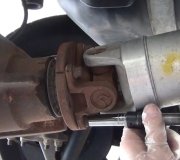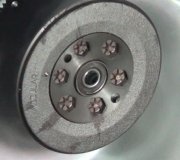Hi Big Chief 97. Welcome to the forum. The manufacturer would never lower a vehicle's ride height by changing the suspension angles with shorter springs. They spend way too much research time and money on making everything perform properly at the design height. That doesn't mean they might not lower the body by installing non-standard parts. In particular, front spindles that have the axle stubs raised a few inches will lower the entire front end without changing the suspension geometry. That geometry is critical for proper tire wear and handling over bumpy roads. When people just use longer or shorter springs, the upper and lower control arms no longer are horizontal when the truck is at rest. That will cause accelerated tire wear as they move left and right as the truck frame goes up and down as you go down the road. If you haven't noticed rapid tire wear, I'm confident your truck has been lowered without affecting the suspension system.
The problem comes from lowering the rear. Regardless how it was done, the axle has been raised up closer to the frame. That will reduce the angle difference between the pinion gear and the driveshaft. If just the angle was increased, such as when trucks are raised, and the vibration occurred right away, the high angle would be suspect as the cause, but when it takes a few months to show up, it is due to wear, not ride height specifically. There is supposed to be a small angle change from the transmission's output shaft to the driveshaft and from the driveshaft to the pinion gear. That angle makes the u-joints rotate in their bearing cups every driveshaft revolution. When the angle between these parts is reduced to near 0 degrees, the needle bearings stay in one spot and tend to pound out matching spots in the cups. If you examine one of the old cups, you'll feel the ridges inside where the needle bearings ride. Three months seems kind of extreme for this to occur but it is possible.
Find a suspension and alignment mechanic who understands driveshaft angles and ride height issues and have him measure the angle. The cure to this problem is to adjust the rear axle to increase the angle. On trucks with leaf springs, that just involves popping in a pair of shims between the springs and axle housing. If your truck uses four control arms with coil springs, you'll have to see if there are shorter upper arms available. There also might be adjustable bushings available for the original control arms. The front of the driveshaft is a little trickier. If the tail housing can be raised, that will increase the front angle, but you have to have the room to do that. You also must consider the fan if your truck has a belt driven one. It will move down a little but should not be enough to cause it to hit the shroud.
Caradiodoc
Monday, June 14th, 2010 AT 6:40 AM



